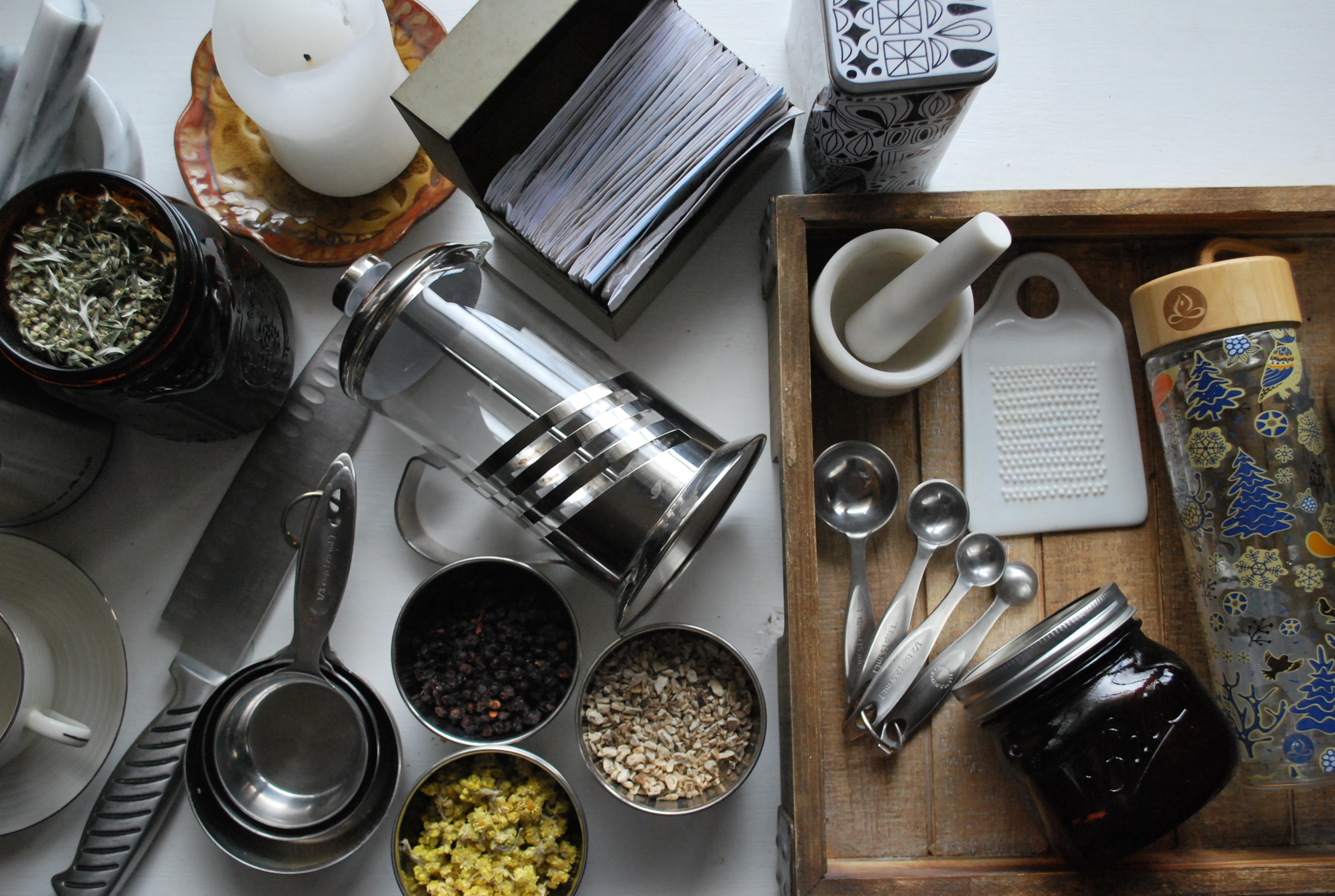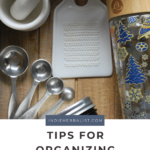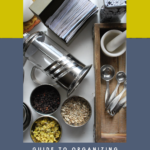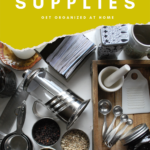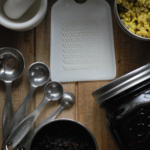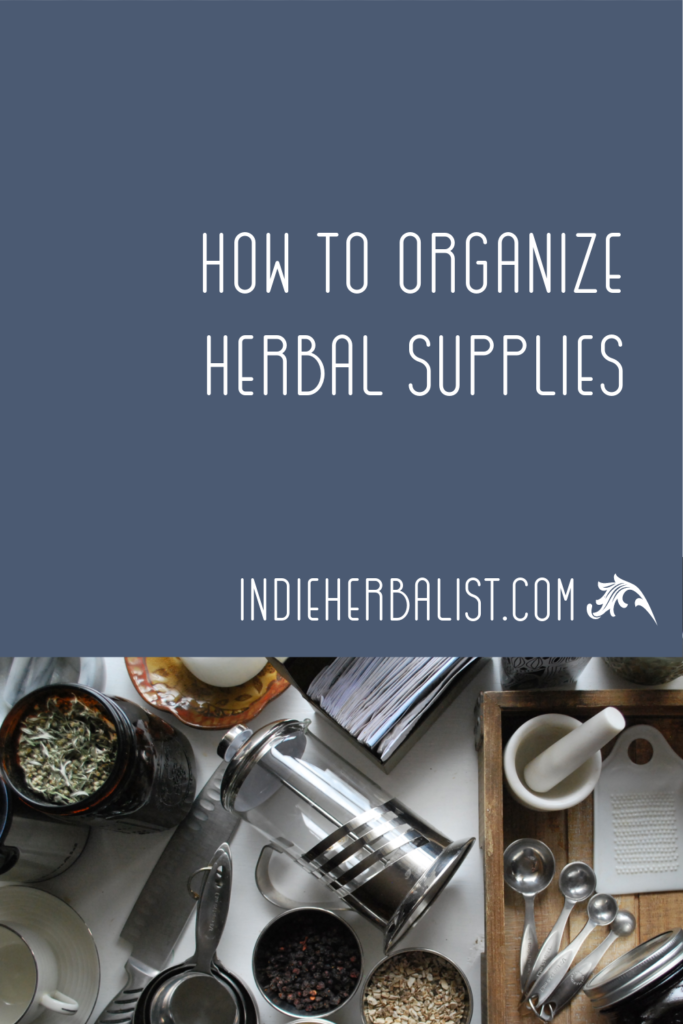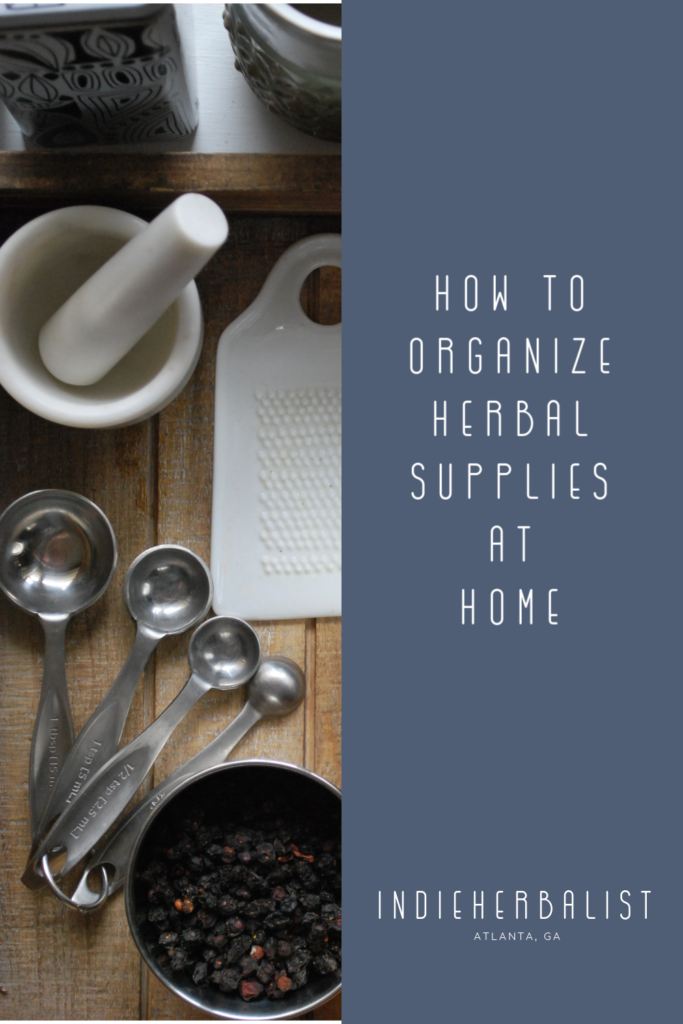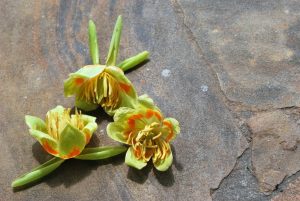Links contained in this post and elsewhere on my website may include affiliate links. When you make a purchase through these links, I earn a commission at no additional cost to you. I only link to products and services that I love - and that I think you will love, too!
It doesn’t take long for a new home herbalist to gather an impressive collection of dried herbs, extracts, herbal supplies, and information! Feeling overwhelmed about how to organize your herbal supplies and notes? Don’t worry – we’ve all been there!
I began collecting herbs and extracts in earnest over ten years ago, so I remember what it was like to juggle all of my new tools and herbal supplies. I finally realized that my organization needs fell under two categories: herbal supplies and herbal record keeping.
Organization is a very personal thing, and some of the best systems evolve over time – so don’t worry if it takes a little while to find a system that works for you. Here are some hints and tips I worked out for myself that may help you get started!
Tips to organize herbal supplies at home
One of the best things about being an herbalist is having lots of materials around to work with. The herbal learning process is about experiencing herbal preparations like syrups, salves, extracts, and tea blends firsthand. Plus, it’s much easier, for me at least, to remember what herbs go into a traditional formula if I have made that formula at least once. However, herbal supplies can take up a lot of space and get disorganized very quickly.
A designated location
Designating a specific location for my herbs was one of the best things I did to get organized. I bought a freestanding cabinet for my herbs and tools, and set it up near my bookshelves. A kitchen cabinet can also work well if you have the space for it. My kitchen is tiny, so my herbal cabinet lives in my bedroom. Wherever you make space, don’t use a bathroom cabinet or keep your herbs in an unfinished basement or attic. The high humidity in a bathroom will ruin your herbs. Extremes of temperature are bad for them, too!
Organizing the cabinet
I prefer to keep extracts on the top two shelves in my cabinet. My mortar and pestle, my cutting board and knives, and beeswax also stay on those shelves. Enameled pots (dedicated for herbal concoctions) go on the top of the cabinet. I also keep bar cloths, mesh strainers, a coffee grinder, and an apron handy in a basket by the cabinet. Dried herbs are organized along the remaining shelves, and are stored in wide-mouth, screw-top containers (easier to handle than lots of bags). I tried keeping my herbs in alphabetical order for a while but soon realized that organizing by leaves/barks and roots/flowers works better for me.
Labels for herbal supplie
Labeling options for bulk herbs include computer printed (my favorite, they look fabulous), taped-on labels from the bags the herbs came in (second favorite), and hand-labeled. I like to keep track of the date purchased, company, and lot number (or location and date of harvest). Labeling with both the common name and the botanical name is a good way to help gradually learn the botanical name by association. Extracts I make myself are usually hand-labeled with a press date, common name, and whether the extract was made from dried or fresh plant material.
Other containers for organizing herbal supplies
Of course, a cabinet isn’t the only way to organize your herbal supplies. If you prefer to work with extracts and don’t keep many dried herbs on hand, a smaller kit is perfect. Thrift stores can turn up vintage luggage that’s sturdy and perfect for an herbal kit. This article shows how I cleaned up an old train case to make a first aid kit. I use one to keep extracts and another to keep tools.
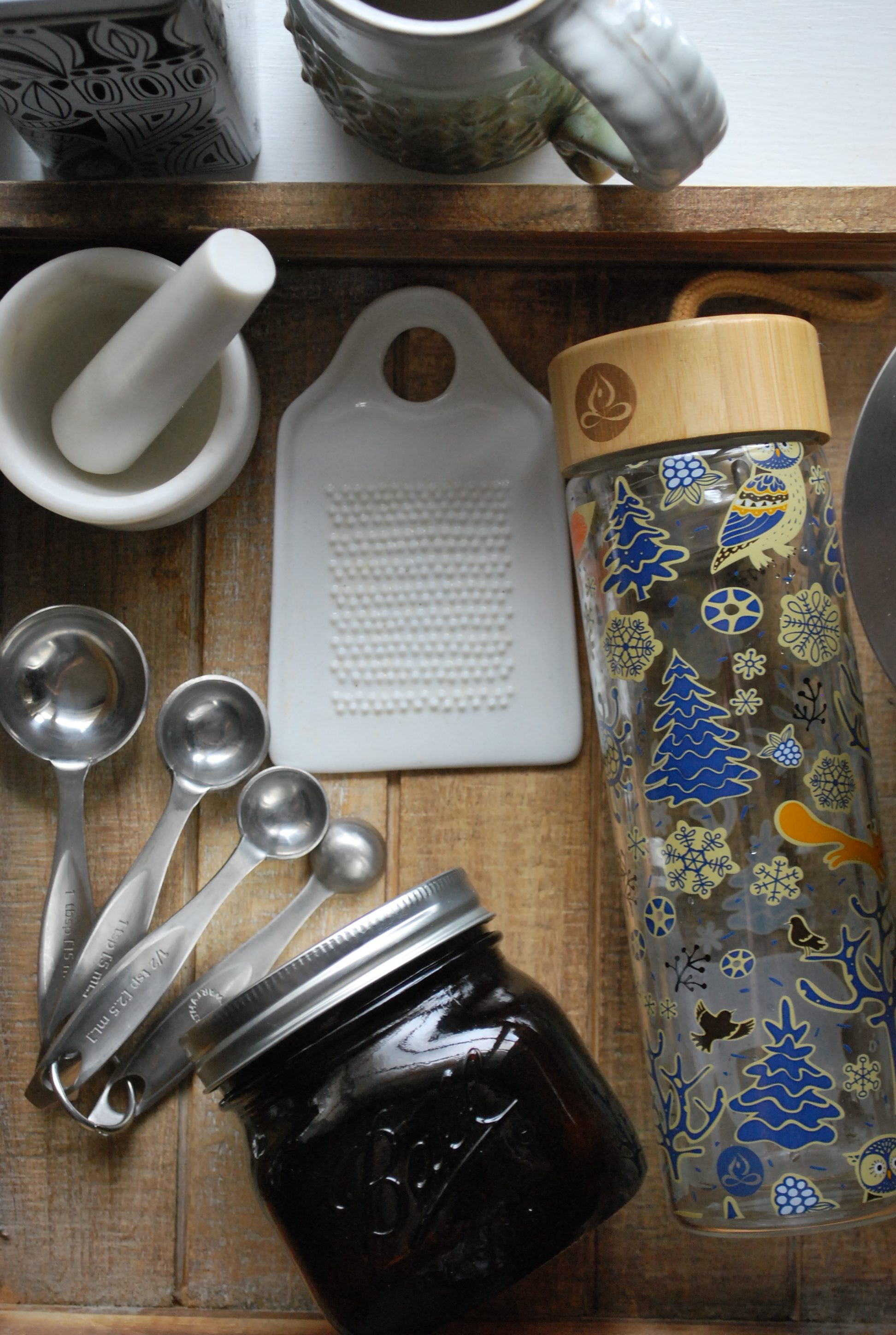
This post was originally published on October 16, 2011. Last updated December 30, 2021.
